You can do it with improvised means! How to bleed air from a radiator if there is no Mayevsky tap?

The reason for the low efficiency of the heating system is often air that accumulates in the pipes and radiators. To eliminate the problems, it is necessary to release excess air from the radiators.
Usually used for this purpose Mayevsky crane, but if it is not there, other methods are used.
Causes of air in the radiator
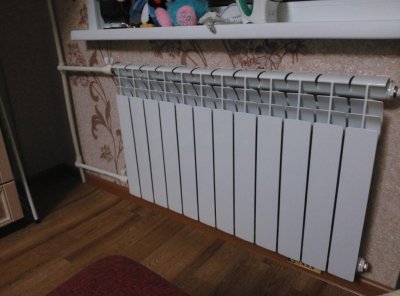
- High coolant temperature - hot water releases air, which moves to the upper parts of the circuit components;
- incorrect installation;
- Incorrect system startup;
- insufficient pressure;
- wear and tear, weak seals;
- poor water conductivity (blockages in pipes);
- poorly done repairs or prevention (this is relevant in apartments);
- wear of pipes And radiators, rust;
- lack of air vent in the system, incorrectly installed or faulty air vents.
Carrying out repair work
If you notice signs of air in your heating system, you should not immediately start getting rid of it. First, the circuit is checked for integrity and tightness. After all, if there are leaks, the problems will continue.
Coolant leak
Coolant leakage is a loss of liquid that occurs due to loose connections and damage to the circuit.
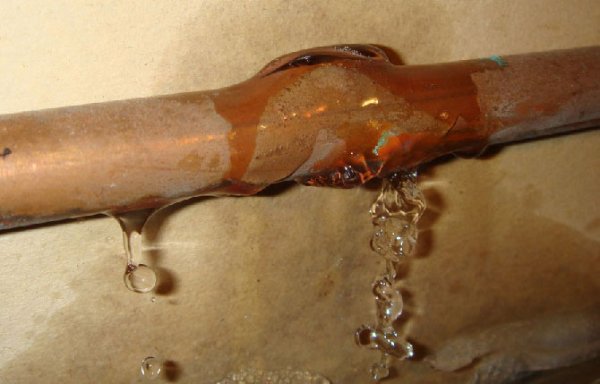
Photo 1. Leak in the heating system pipe. Such a malfunction can cause poor operation of the heating structure.
Possible leak locations and methods of elimination:
- Pipe sections. To stop the leak, clamps and cold welding are used. If the pipe is plastic, the entire section is replaced.
- The joints of the system parts are sealed. Welding is used.
- Loose connection of radiator sections. You will have to remove the battery and tighten the connections (on aluminum). Cast iron radiators are glued with fabric and epoxy resin.
This is a labor-intensive part of the work to prepare the system for the heating season. But it must be done, otherwise you may be left without heat in winter.
Continuous loss of coolant will lead to unstable operation of the system.
Peculiarities of the underfloor heating system
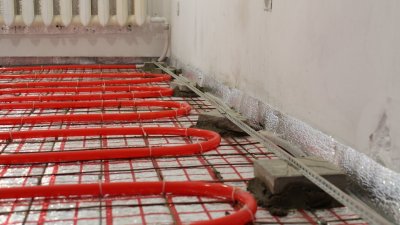
The presence of underfloor heating complicates the system, It is not easy to remove air from the floor loops.
Air locks appear due to:
- pressure reduction;
- strong heating coolant;
- formation of leaks;
- leaks connections;
- errors made during installation (uneven surface, pipe slope, errors in collector organization);
- illiterate first launch systems.
To ensure the system starts up properly, the air is bled from it. before turning on the boiler and heating the coolant.
If underfloor heating is the main means of achieving a comfortable temperature, then air must not be allowed in it.
Attention! A normal system works even if there is air in it. Efficiency will decrease, but the heat will still come in. When air appears in the circuit, the floor will stop heating - the reason for this is the complex installation and small diameter of the pipeline.
Bleeding air from the floor circuit is a lengthy process:

- It turns on at the collector only one contour.
- The pressure is increased above the working pressure (by 15-20%).
- The circulation pump starts at low speed. Some time is allotted for filling the circuit so that the coolant displaces the air. Then the next circuit is activated, so one after another all the branches going through the collector are slowly filled.
- The process takes several days. It is repeated until all the air is released.
- This is done with a cold coolant., the heating is switched on only after it is certain that the air has completely escaped.
Reference. When installing the system, it is useful to think about equipping the floor circuit separator — a device for automatically removing air from pipes.
Coolant refresh rate
Liquid is an important component of heating that must be used correctly.
Periodic replacement is necessary, but do not overdo it. The optimal shelf life of liquid in pipes is 12 months, subject to mandatory draining of the system.
Synthetic heat carriers: propylene glycol, ethylene glycol remain in the system up to 7-8 years.
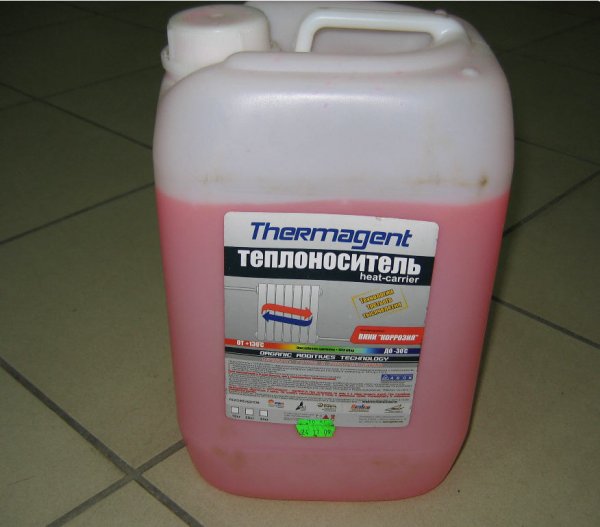
Photo 2. Canister with synthetic heat carrier for heating system. This substance lasts longer than regular water.
Concentration of synthetic compounds in the liquid extends the shelf life of the coolant. But if there is no need to use antifreeze, then you can get by with plain water.
The time for replacement will be indicated by the coarse filters: if they do not need to be flushed and replaced, then the water in the system is also suitable and does not need to be changed.
This is important because each fresh portion of liquid is a fresh set of salts and impurities, oxygen, which with renewed vigor enters into a reaction with the internal surfaces, settling on them in layers, gradually reducing the efficiency of the system.
Important! The water that is already in the circuit is prepared liquid, without impurities and active substances. The fact that the water has changed color does not change its value - it has already undergone reactions, has received inertness and is now an optimal addition to the efficiency of the system.
If the radiators are clogged, you can remove them for cleaning without draining them. it is enough to simply close the valves.
System start
Excessive amount of air occurs when pouring coolant into the system.
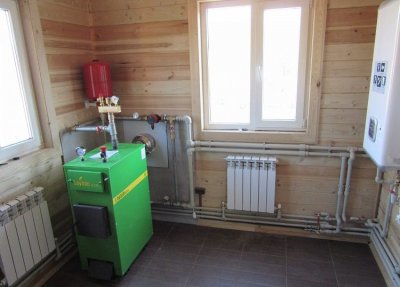
To start the system correctly from the start, it is filled with coolant according to a specific algorithm.
Water is supplied from the bottom up, and the valves must be closed. only taps for draining liquid.
The remaining valves remain open until water begins to flow from them. Thus, gradually closing each tap, the system is filled and prepared for launch.
After the entire contour is filled, it starts forced circulation (pump).
How to bleed air from a radiator if there is no Mayevsky tap
If the radiator is not equipped with air bleeders, you will have to get rid of the air in a more labor-intensive way.
For these purposes it serves plug sealed with tow. The structure is usually covered with paint in several layers. This option is more common in older houses with cast iron radiators.
If signs of airiness are heard and felt (noises and cold batteries), then you will have to act according to a time-tested scheme.
To preserve property and health you need to take care of disconnecting the riserIf the plug is completely unscrewed, there will be a flood.
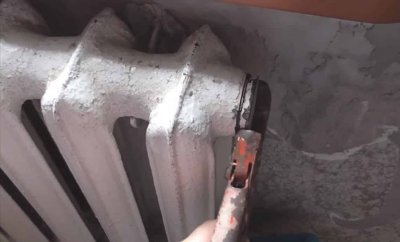
Necessary tools and materials:
- adjustable wrench;
- basin for liquid;
- solvent.
At first The plug is wrapped with a rag with solvent. You'll have to wait until the paint softens. After that, you'll need to scrape it off.
Then with an adjustable wrench they begin to carefully unscrew the plug.
When the plug moves from its place, you should turn it very slowly, until you hear the sound of air escaping.
When the hissing stops, the plug is re-sealed with tow or with a special tape and carefully screw it into place.
Useful video
Watch a video that explains what a Mayevsky crane is and how it works.
Results
If the Mayevsky crane is installed at your neighbors, you have a choice:
- start releasing air yourself, without waiting for them to return;
- wait for the neighbors.
The first option will be completed if the work sequence and accuracy are observed. But if there are any difficulties, It's better to call a plumber.






